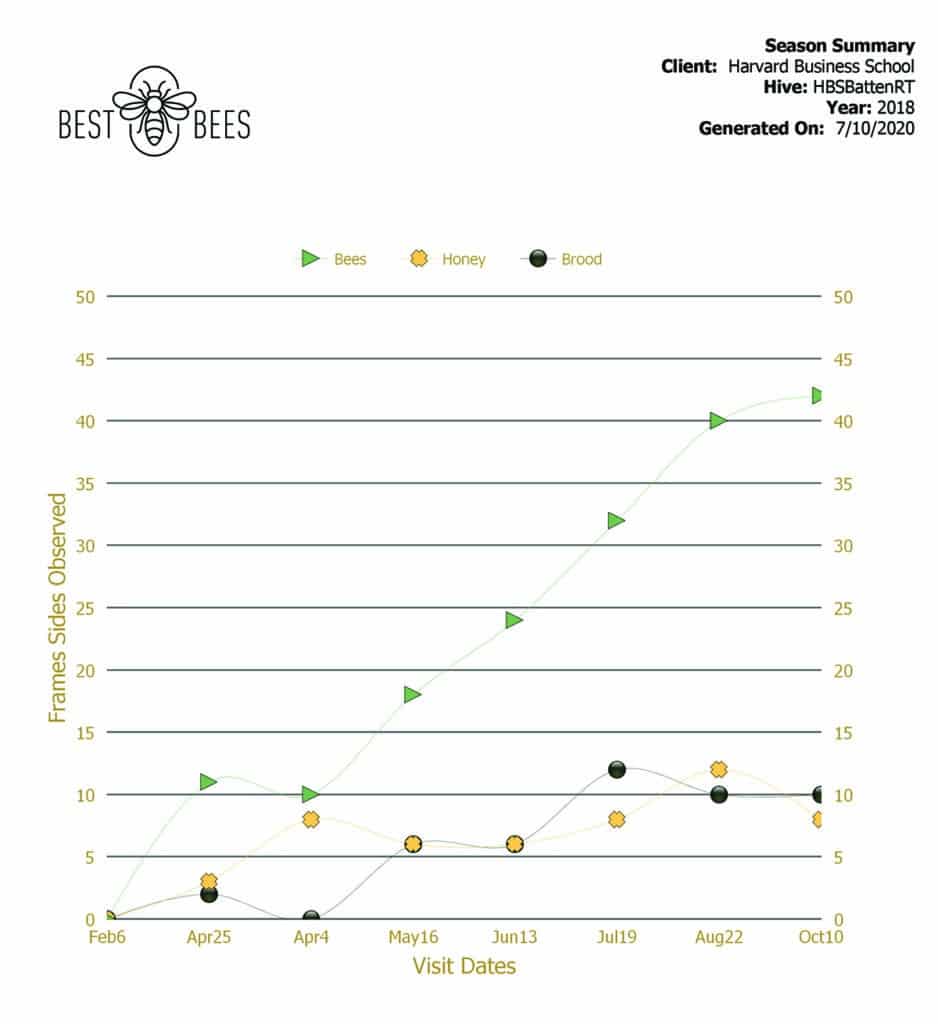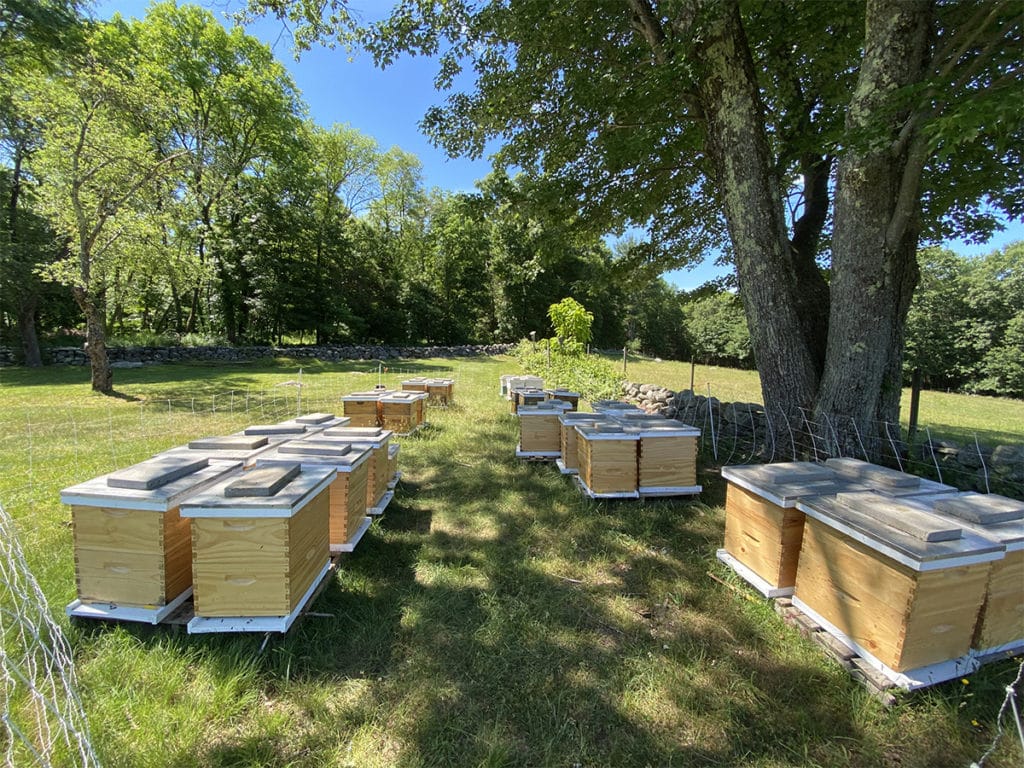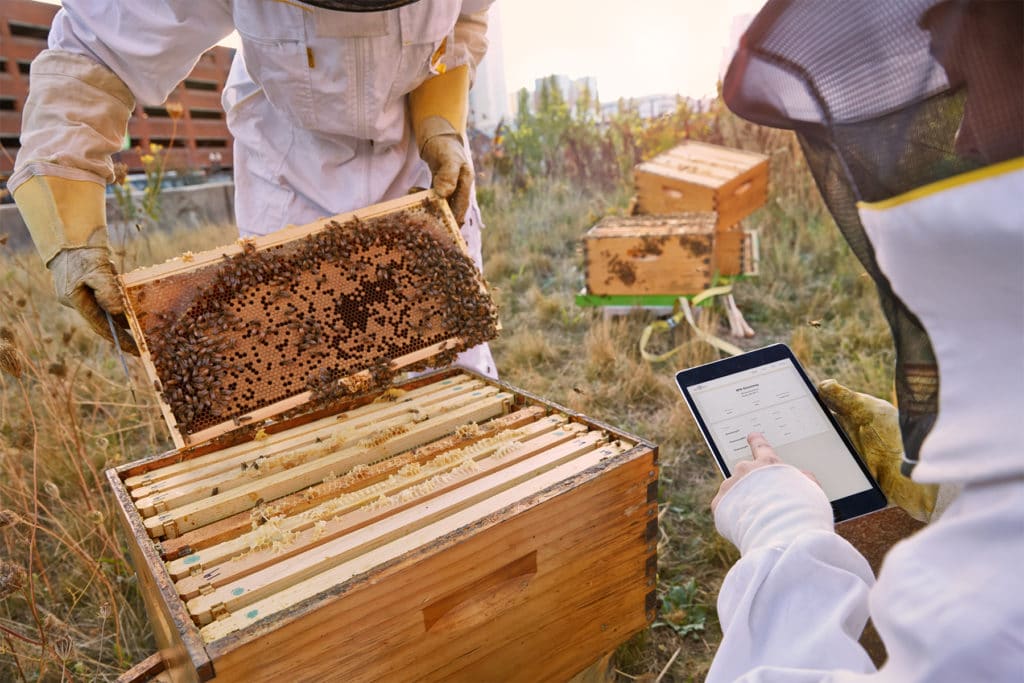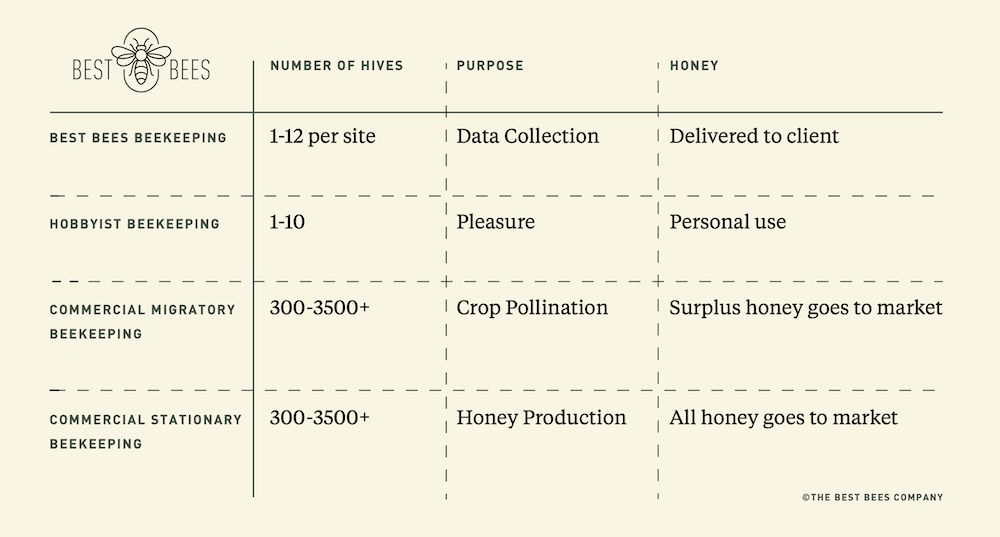Like so many success stories in Massachusetts, The Best Bees Company began in a university science lab. I was finishing my PhD at Tufts and realized funding for my bee research would soon run out. I thought if I could be paid to service beehives, I could keep my research going, and have a real-time source of data on bee health to work with as well. From that humble beginning—one client, one hive, one data point—Best Bees has grown to become the largest beekeeping service in North America, with customers in 12 different metropolitan areas, 1,000+ hives, and data from 47,000+ service visits—the largest bee database in the United States.
What makes us unique among beekeepers is the combination of service and science we offer.
Every hive we tend to is an opportunity for us to collect data on colony health, and the factors affecting it. We measure the number of active bees, larvae and the quantity of honey produced in frames. We note presence and pathogens, their type and quantity. This data is loaded by our beekeepers into our proprietary software, Bzzz, where it’s compiled and analyzed by our non-profit research organization, the Urban Beekeeping Lab and Beekeeping Sanctuary (UBL). Our beekeepers also collect honey and send it to a partnered lab where we conduct DNA analysis to determine what trees, shrubs and plants our bees are pollinating. The rapid growth in understanding of bees and the best practices we employ to improve their health, is a direct result of the data we capture and the scientific inquiry made possible by it.
Our clients and beekeepers form a citizen scientist movement that gathers invaluable data for our professional scientists to evaluate. To augment the capabilities of our Urban Beekeeping Lab, we’ve formed partnerships with some of the premier research institutes in the nation. These organizations are eager to work with us because of our ability to share data and insight with them, and to provide a laboratory of bee colonies where we can test, together, innovations in care and habitat that offer the promise of significant positive impact on bees.
As the start of a new monthly report on learning from our scientific research, I’d like to share with you some of the work we’re doing with NASA, through the lens of one of our clients, the Harvard Business School. While the pandemic may have shut down much of the economy, we’ve been able, with the help of these organizations, to continue to gather and analyze valuable data and use it to further the cause of bee health and food security—an issue we’ve all been made acutely aware of with COVID-related interruptions in the global food supply chain.
NASA
Before the onset of COVID-19, we were working with Harvard Business School (HBS) to maintain four hives on the roof of two campus buildings, using the data from those hives to monitor changes in bee colony size and honey production—two key indicators of bee health. Figure 1 shows a report of what a full season of data looks like from our automated software system, Bzzz. As you can see, over time, the population of both adult bees and their developing brood tend to increase, as does the amount of honey the bees produce and store in the wax comb within the nest.

Like everyone, we had to adapt quickly to the pandemic: to continue to monitor bee health, we had to move the hives offsite, as HBS needed to restrict access to the buildings. With the help of HBS staff, these remote worker bees are now off-campus, where they are providing data to a number of research projects. One such project is a program with NASA we call Food Security because of the critical role bees play in over a third of all the food consumed in this country.
Here’s how project Food Security works:
- UBL shares data collected from the HBS hives with NASA.
- NASA enlists students through their DEVELOP program to analyze the information using cutting edge technologies.
- The data collected from the HBS bees is compared to what two satellites are reporting back to the Goddard Space Flight Center in Maryland
- The students report to NASA and UBL on the impacts of climate change on bee health.
While this project is only in its first phase, initial data is helping us to form new hypotheses about weather changes and bee health. As the project evolves we look forward to sharing what we’ve learned with you, our citizen scientist supporters.

What’s coming next?
Tune in to our new, monthly science blog series where we’ll go into detail about many of these exciting projects and more. We have lots to share about how we’re building on past projects, from the effects of pesticides on bee health to the impact of suborbital space on bee social behavior. I hope that this has inspired some wonder in you.
The scientific method starts with an observation, which then leads to a question. Perhaps something you’ve read here sparks that question. Let your mind go further in exploring a possible answer, what we call a hypothesis. And then, consider how you, or we, could put that to the test. Herein lies the joy of community-driven, grassroots science.






